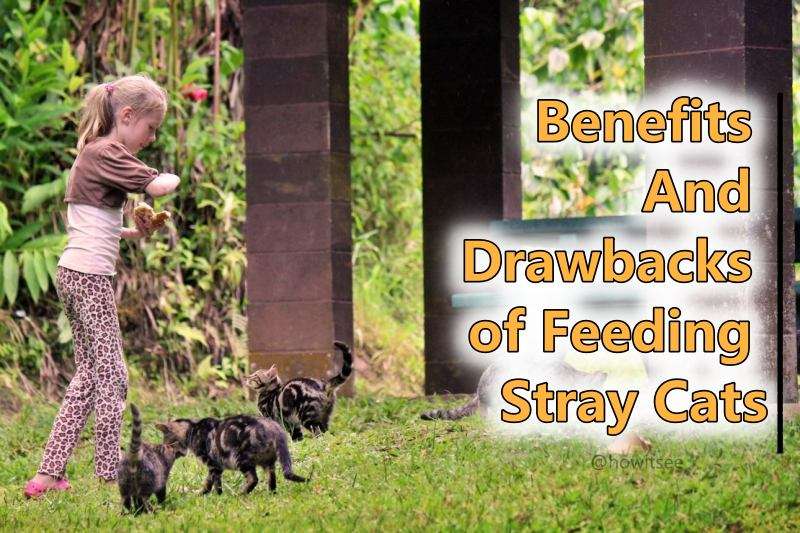Nowadays, many woke people can be seen feeding stray cats and taking care of stray cats located in any particular area, but do you know what feeding cats actually means and what the pros and cons are related to it? We have come up with a mind-altering article on this intriguing topic.
Firstly, one should know what “feeding stray cats” actually means. It is the practice of providing food or eateries as well as other basic items needed by those cats who don’t have a home or caretaker and reside completely on their own in urban as well as rural areas among human populations.
It can also mean helping to provide resources such as food items, medical help, transportation help, shelters, or volunteering for spay/neuter programs that help cats in need.
For now, feeding stray cats has become a topic of debate due to enhanced awareness regarding this subject.
Some people believe it helps support a population of cats that would otherwise struggle to survive, while others believe it encourages cats to remain on the streets. Their dependency on humans to provide them with food increases.
There are also some serious concerns regarding the public health conditions that feeding stray cats can create.
It can lead to an increase in the number of cats in nearby feeding areas, which could lead to increased instances of infestations of several species that are related to cats as parasites or prey, such as fleas and rodents, and can cause potential health risks by generating various diseases.
Benefits of Feeding Stray Cats
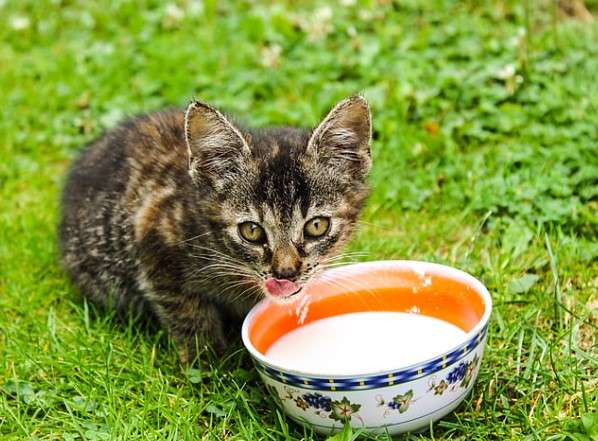
1) Preventing Starvation And Malnutrition
Feeding stray cats improves their health and well-being, helps reduce the amount of malnutrition and starvation among them, and even helps cure the condition of malnourished cats.
Stray cats can suffer from various health conditions when enough food and nutrition are not provided to them, and this can result in issues such as a poor coat and lousy skin condition, weakened immunity, susceptibility to parasites such as ticks and fleas, and various diseases.
Providing a balanced nutritious diet can help improve the overall health of cats and reduce the risk of malnutrition or starvation in them.
2) Reducing The Risk Of Disease Transmission
Feeding stray cats can reduce the risk of disease transmission by providing a reliable food source. This reduces the need to roam and forage and reduces encounters with other animals and humans.
Additionally, feeding your cat a consistent diet will make identifying and treating potential ailments easier. Also, feeding them reduces stress levels, making them less likely to contract diseases.
3) Establishing A Bond With The Community Of Cats
Feeding stray cats helps build bonds between cats and their communities by providing a reliable source of food, being kind to animals, and providing a safe place to seek shelter.
Feeding feral cats keeps them away from other food sources, such as litter, and creates a healthier environment for both cats and humans. It also helps build trust with humans and may encourage more people to adopt and care for cats.
Finally, by providing cat food, communities can reduce the number of cats living on the streets or in shelters.
4) Helping To Reduce The Number Of Feral Cats In The Long Run
Feeding stray cats is beneficial in reducing feral or stray cat numbers in the long run because it gives stray cats access to nutritious foods to help them stay healthy and reduce their risk of disease and other health problems.
In addition, it can also reduce the need for cats to compete for resources, reducing the need for cats to roam and hunt. This helps keep the cats where they belong and reduces the chances of them becoming strays. It is possible that fewer cats are born.
Feeding stray cats can have many other positive effects, such as providing comfort and companionship to stray cats living on the streets without human contact and being susceptible to all kinds of dangers.
Reducing the number of nuisance behaviors such as fighting, spraying, and other aggressive behaviors that can occur when cats are not spayed or neutered
Helping society and people create a sense of community and connectedness by providing an opportunity to interact with and care for animals.
Drawbacks of Feeding Stray Cats
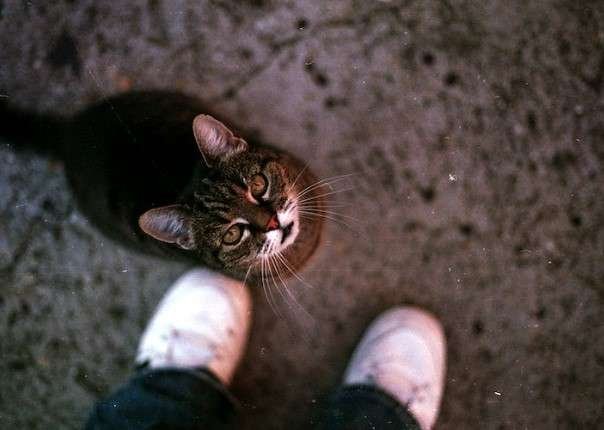
1) Encouraging Dependency on Humans
Feeding stray cats can have unintended consequences in the long run, as it can lead to dependence on humans for basic needs and make cats dependent on humans for food and their diet.
Slowly, they learn to associate humans with food, which can be problematic for them and put them in danger of not getting all the proper nutrition their bodies require, and they might be overfed sometimes.
Moreover, feeding stray cats can lead to inconvenient behaviors and an increase in the number of stray cats in the feeding area.
So, in order to avoid these things or to decrease the risk of such behavior, one can opt for a proper food-feeding routine in addition to providing them with other essential nutrients, such as water and shelter, which will encourage them to live independently.
2) Attracting More Cats To An Area Than It Can Support
Feeding stray cats in an area can attract other cats to that particular area because they will recognize that area as a reliable source of food and other necessities.
This can cause unsustainable situations because of the population explosion, and any area can never be large enough to support more than enough cats due to enhanced competition for limited sources.
Their increased populations can even overtake locally available natural resources, such as food and shelter, which eventually generates bigger issues in cats, including malnutrition, overpopulation, and the spread of diseases.
That’s why it is important to keep a check on cat populations in the feeding areas and maintain a healthy population.
3) Health Risks Associated With Feeding And Caring For Cats
Feeding and taking care of stray cats can pose health risks to cats as well as humans because cats are known to contract and spread diseases to each other and to humans as they host various types of parasites, including fleas, ticks, and other pests.
Stray cats can carry transmissible diseases, which include rabies, feline leukaemia virus (FeLV), feline immunodeficiency virus (FIV), and upper respiratory infections. These diseases are difficult to treat, and their treatments can even be expensive.
So it is advised to take necessary precautions while handling feral cats, such as wearing gloves and washing your hands frequently, from time to time. Also, make sure that you’re taking them to a veterinarian for vaccinations, check-ups, and examinations if needed.
4) Environmental Impact of Cat Waste
Feeding stray cats can have both positive and negative effects on the environment. On the one hand, it can help in maintaining the desired and healthy population size of stray cats, while on the other, the process can lead to waste generation, which can affect the environment negatively.
As we know, many cats are euthanized in shelters, so the practice of feeding stray cats can overcome this significant problem.
Overfeeding, on the other hand, can result in an increase in the population of stray cats, which can eventually cause damage to their surroundings and other native wildlife.
Also, an increase in their numbers could lead to shortages of food resources, and they may die from overcrowding. So, it is more than essential to feed them in moderation and avoid overcrowding the area.
Waste generation is another major impact on the environment that can be caused by feeding and taking care of stray cats.
The process of grooming and feeding can result in an ample amount of waste; moreover, opting for wet canned foods over dry foods can also affect waste generation, so it is advised to choose dry foods for the cats.
Also, a proper waste management system should be implemented for the reduction and management of waste produced because of grooming and feeding processes.
5) Fleas and Rodents Infestation
Feeding stray cats leads to infestations of fleas and rodents because fleas usually feed on cats, which are supposedly their hosts, and that is the reason they can survive in those surroundings, which support a large number of cats.
While rodent infestations in an area increase due to less competition for food sources, which results in higher survival rates and population growth of rodents.
Other Drawbacks
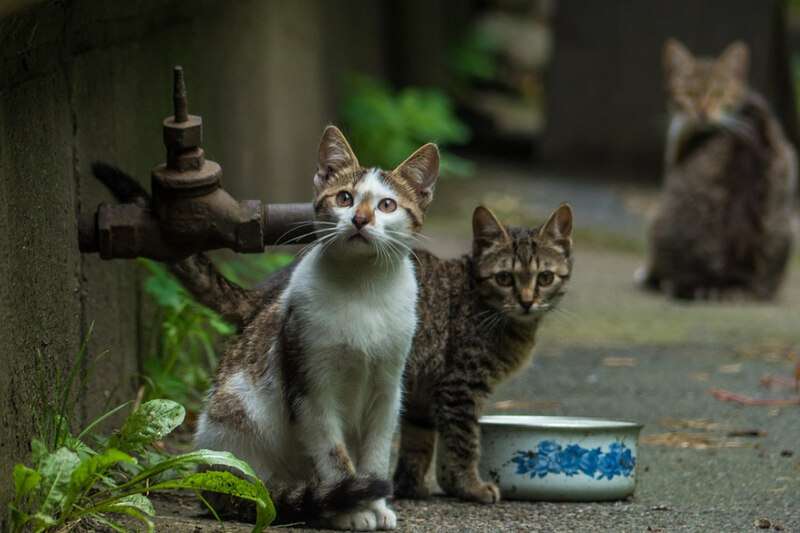
- Creating an unnatural food source composed of harmful preservatives or artificial colors that can adversely affect their health and provide them with unhealthy diets that can lead to obesity, diabetes, and other health issues.
- Encouraging population growth: stray cats can reproduce faster than their natural predators, which can lead to overcrowding in certain areas and, in turn, a higher rate of disease transmission among the cats.
- Promoting aggressive territorial behavior: Feeding cats encourages them to stick around the same area, leading to territorial disputes between cats for access to food.
- Negative impacts on local wildlife: stray cats are predators and can prey on local birds and other small animal populations, which can lead to a decrease in local species diversity.
Best Practices For Feeding Stray Cats
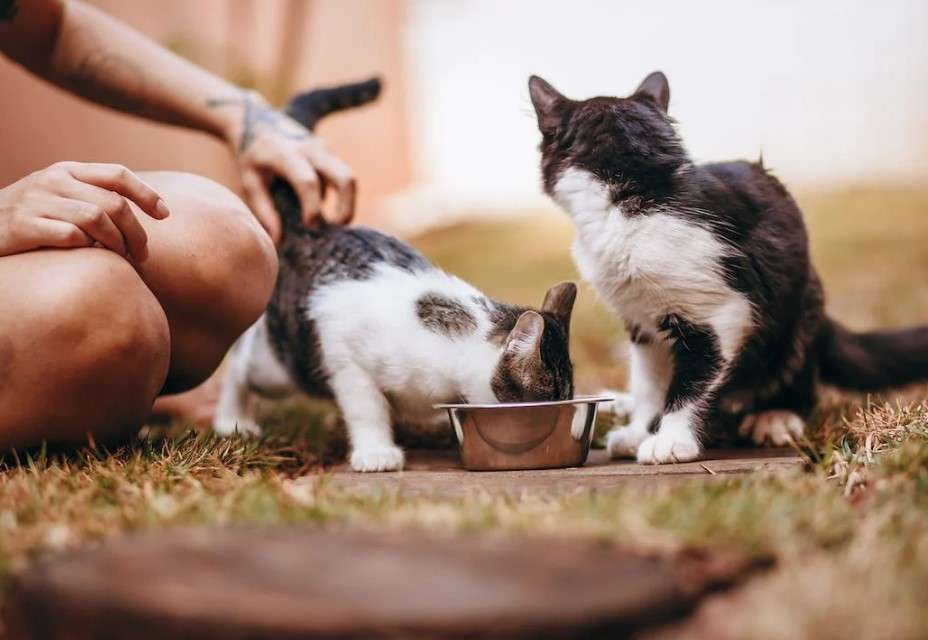
- Schedule regular feeding times: Animals get used to the routine. This regular feeding schedule will help cats know when to expect food, curbing chaos.
- Respect Animal Boundaries: Always remember to respect their boundaries when approaching a stray cat. For example, if the cat gets scared and runs away, don’t grab it or chase it, as it may traumatize it.
- Balanced Diet: Cats prefer and love a diet consisting primarily of dry food, wet food, and cat treats, so providing them with a balanced diet to eat will help them stay healthy and fit.
- Keep the feeding area clean: As we know, prevention is better than cure, which is why you should always remember to clean the feeding area after feeding your cat to keep it sanitary and pest-free, as it will save the cat from future ailments.
- Provide access to fresh water. Make sure your cat has access to fresh and clean water. This is essential for their health and overall well-being.
- Avoid overeating: Providing the cat with heavy or huge meals can result in overeating, which could be dangerous for cats.
- Talk to a veterinarian: If you think any one of the cats has a health problem, it’s best to consult any local veterinarian; many veterinarians are also there and are ready to contribute to this noble deed as a perk.
- Spaying and neutering of stray cats: Spaying and neutering of stray cats should be the primary activity for a stray cat caretaker because it helps in reducing the population of stray cats and reduces the risk of aggression that might be due to the non-neutering of the cats and lead to fights and injuries. So, it is vital to reduce the proportion of unwanted litter and prevent the spread of disease.
Conclusions
Now that you know all the benefits and risks associated with feeding and taking care of stray cats, you can successfully volunteer for any NGO or other institution related to cats, or you can take care of them on your own. Here, we conclude our article.
References:
- Feline Immunodeficiency Virus (FIV) by vet.cornell.edu
- Reasons to Spay or Neuter Your Cat by resources.bestfriend
- Pros and cons of feeding stray cats by seniorcatwellness
- Wikipedia
Also Read:

Hey there! I’ve been the kid who used to love watching all the science stuff and that fascination lead me to choose Zoology as my Major in Graduation. I’m a self-taught writer and spend my time writing scintillating content on animals. I love observing animals behavior and their bond with humans. I want to give my point of view regarding animals i research about. I had done several projects on animals during my graduation and learned their behavior thoroughly.
